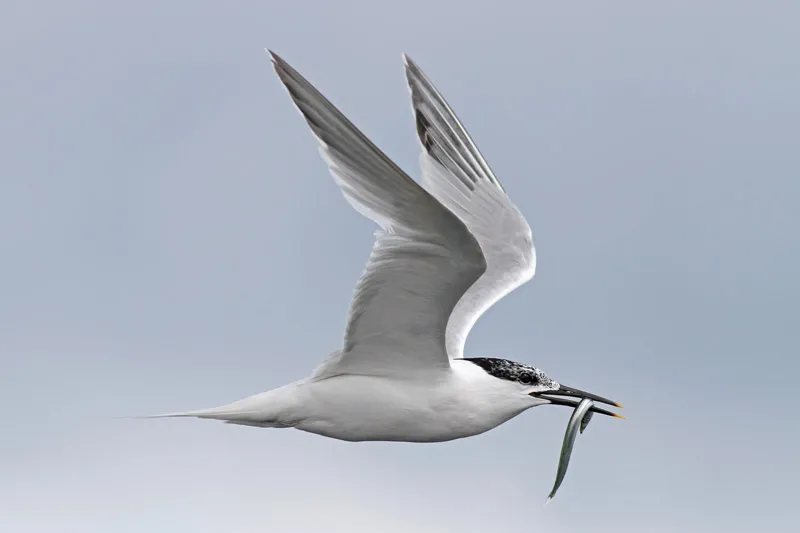Citation

Overview
New research involving BTO used GPS tagging to examine Sandwich Tern foraging behaviour during the breeding season. Like other seabirds, Sandwich Terns are so-called ‘central place foragers’ while they are incubating eggs and feeding chicks, shuttling to and from their nest site in search of food. However, successfully finding food on each trip away from the nest requires navigating a continually changing marine environment and relocating moving prey.
In more detail
Acknowledgements
This study was part of the monitoring programme into the effects of the compensation measures designed for the construction of the seaward expansion of the Rotterdam Harbour (Tweede Maasvlakte). This programme (PMR-NCV) was initiated by the Dutch Ministry of Infrastructure and the Environment and commissioned by Rijkswaterstaat WVL (M. van Eerden and K. Borst). Bureau Waardenburg, INBO Research Institute for Nature and Forest, and Delta Project Management carried out the research on terns within a project commissioned by Wagingen Marine Research (a.o. I. Tulp) and Deltares (a.o. T. Prins). The authors would like to thank A. Gyimesi, M. Poot, M. Collier, E. Bravo Rebolledo (Bureau Waardenburg) and W. Courtens, E. Stienen, H. Verstraete and N. Vanermen (INBO) for help in the field and J. de Jong (BW) for parts of the analysis. Fieldwork was carried in nature reserves of Natuurmonumenten and Staatsbosbeheer and W. van Steenis, H. Meerman, J. de Roon, M. Broere (NM) and R. in ‘t Veld, N. de Bruin, A. Wesdorp (SBB) are thanked for their cooperation and hospitality.
Abstract
Where and when animals forage depends on the spatio-temporal distribution and catchability of prey. In dynamic environments, animals could repeatedly target areas that provide predictable availability of prey or may search for ephemeral conditions of high prey availability. However, how foraging behaviour is initiated in response to static versus dynamic environmental conditions is difficult to study data on abiotics are often lacking.
In this study, central-place foraging Sandwich Terns were tracked using GPS-loggers during foraging. Using Hidden Markov Models, the probability of switching between transit and foraging was shown to be most strongly affected by the static variable sediment type. Wave period (a dynamic variable related to weather), salinity (a spatially changing variable) and water depth (another static variable) affected the transition probability to a lesser extent. Cloud cover, wind speed and current speed were only included in lower ranked models. Air and water temperature were not included in any model.
Consistent with the greater importance of static versus dynamic abiotic conditions, consistency between foraging trips of the same individual varied irrespective of tidal, diurnal or seasonal cycles although trips close in time in the season were slightly more similar than trips with a larger time gap.
We suggest that Sandwich Terns target broad areas with coarser sediments where sandeel (Ammodytidae spp.) are more common, and that weather variables may be related to prey visibility.
Our study suggests that, even in highly dynamic environments, static environmental variables may more strongly affect foraging behaviour of coastal seabirds than dynamic variables.
